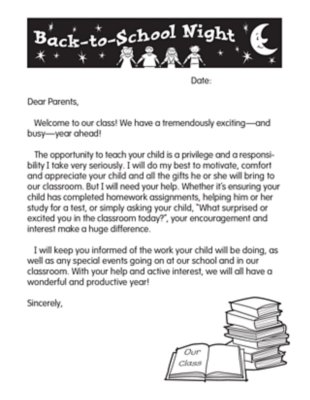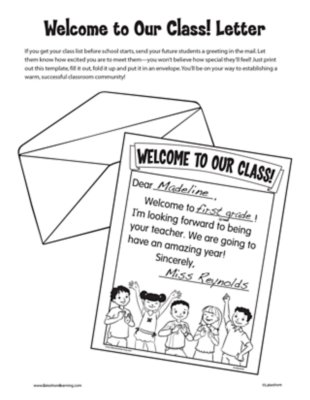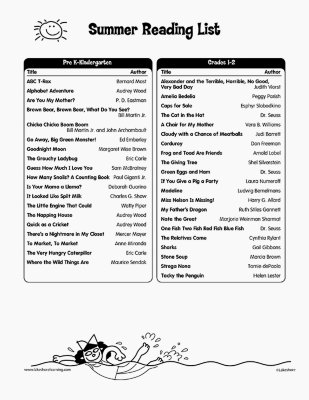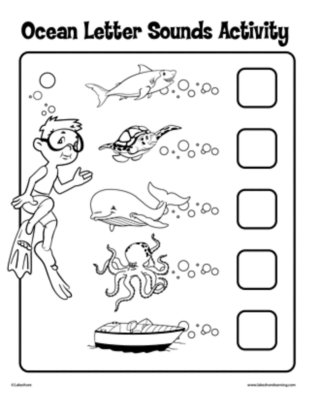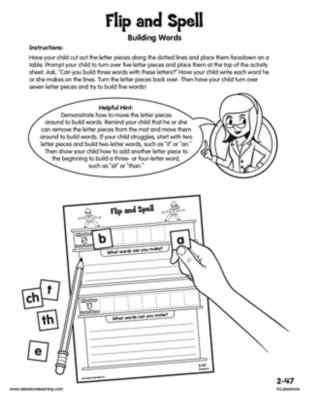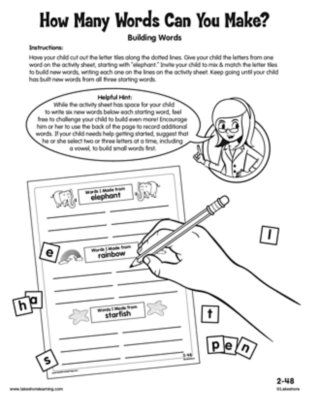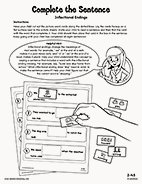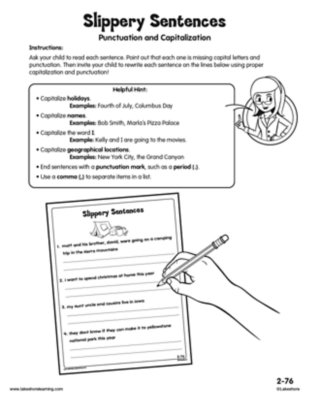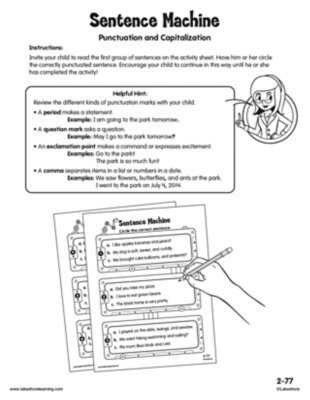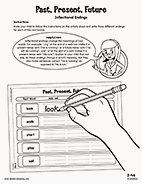Narrow by Grade
- Infant (0)
- Toddler (0)
- Preschool (0)
- Pre-K (2)
- Kindergarten (3)
- 1st (4)
- 2nd (10)
- 3rd (3)
- 4th (2)
- 5th (2)
- 6th & Up (2)
Grade
Narrow by Age
- 0-18m (0)
- 18-36m (0)
- 3 yrs. (0)
- 4 yrs. (2)
- 5 yrs. (17)
- 6 yrs. (8)
- 7 yrs. (10)
- 8 yrs. (5)
- 9 yrs. (3)
- 10 yrs. (2)
- 11 yrs. & Up (2)
Age 7 yrs.
10 results for "letters"
When entering second grade, your child should be able to build and spell simple words by blending sounds together. For example, when given the letters “a,” “e,” “c,” “b,” “d,” “g” and “s,” your child should be able to use the letters to build and read at least three words.
View worksheetWhen entering second grade, your child should be able to build and spell simple words by blending sounds together. For example, when given the letters “a,” “e,” “c,” “b,” “d,” “g” and “s,” your child should be able to use the letters to build and read at least three words.
View worksheetWhen entering second grade, your child should be able to read words with inflectional endings and use them correctly in sentences. Inflectional endings are letters that are added to words, such as “-ing,” “-es,” or “-ed.” For example, your child should be able to read the words “wishing,” “wishes” and “wished” and use them correctly in sentences.
View worksheetDuring second grade, your child will learn to capitalize holidays, product names and geographic names. Your child will also learn to use commas in the greetings and closings of letters and use apostrophes in contractions and possessives, such as “Jeff’s bike.”
View worksheetDuring second grade, your child will learn to capitalize holidays, product names and geographic names. Your child will also learn to use commas in the greetings and closings of letters and use apostrophes in contractions and possessives, such as “Jeff’s bike.”
View worksheetWhen entering second grade, your child should be able to read words with inflectional endings and use them correctly in sentences. Inflectional endings are letters that are added to words, such as “-ing,” “-es,” or “-ed.” For example, your child should be able to read the words “wishing,” “wishes” and “wished” and use them correctly in sentences.
View worksheet